Incense is popular in many countries the world over, Japan included.
It’s a really old and traditional practice and there are lots of different types of incense.
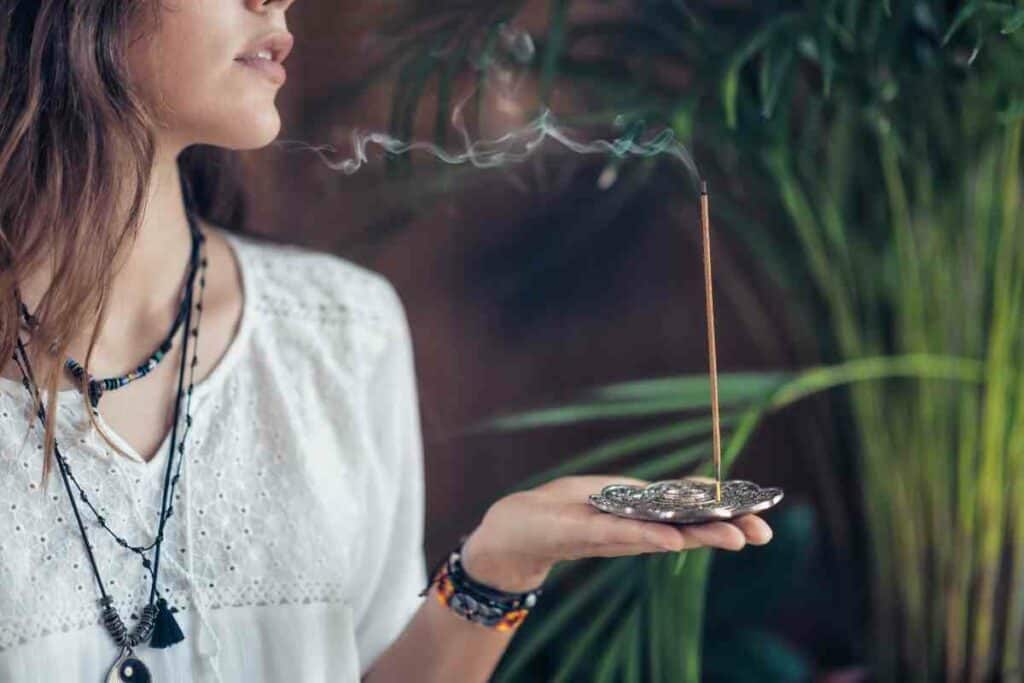
Believe it or not, there is even a correct way to burn Japanese incense.
In This Article – We’ll tell you all about how and why incense is used in Japan. We’ll also introduce the different types of incense and what they’re made of.
So, without further ado, let’s look first at the history of incense in Japan.
Table of Contents
Incense in Japan – a brief history
For more than one thousand years, incense has been used in Japanese culture.
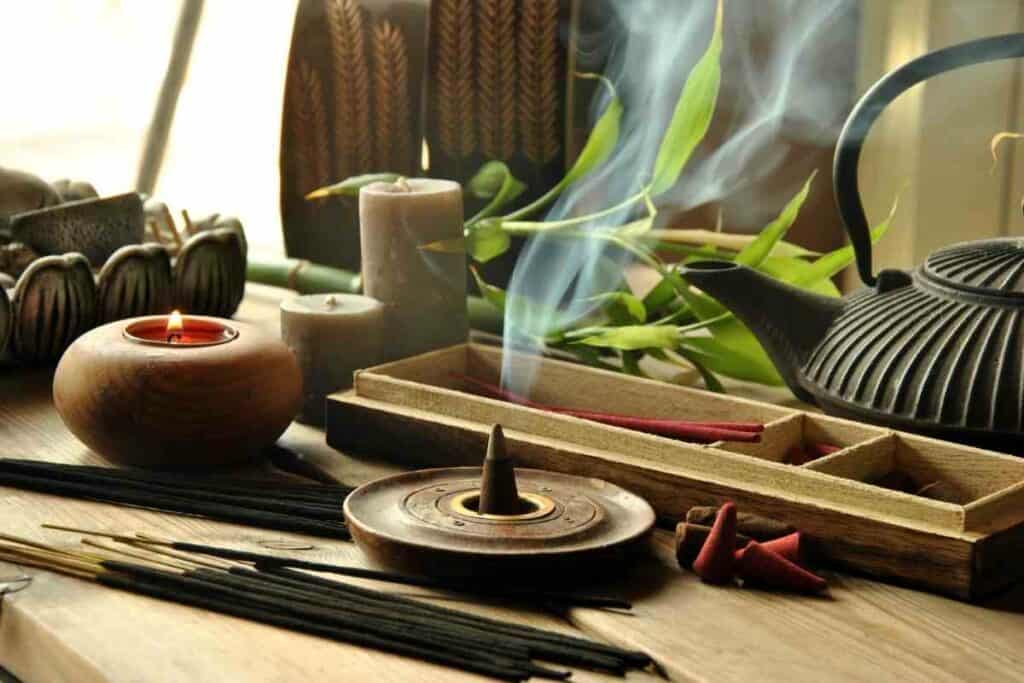
It’s a very important tradition that was first introduced in the 6th century during the Asuka period through China and Buddhist customs.
The Japanese word for incense is ko, which also means “fragrance”. When incense was first used, it was during Buddhist meditation and rituals.
From its introduction to the modern day, incense has become an important aspect of Japanese culture.
Nowadays – It has lots of different uses but still retains its use in Buddhist ceremonies, meditation, and spirituality.
Lots of the current incense companies in Japan have been producing and selling incense for over three centuries!
Incense use in Japan today
Nowadays, many people in Japan still use incense in their daily lives – especially if they follow Buddhism.
It’s very common for small shrines to be found in Japanese households.
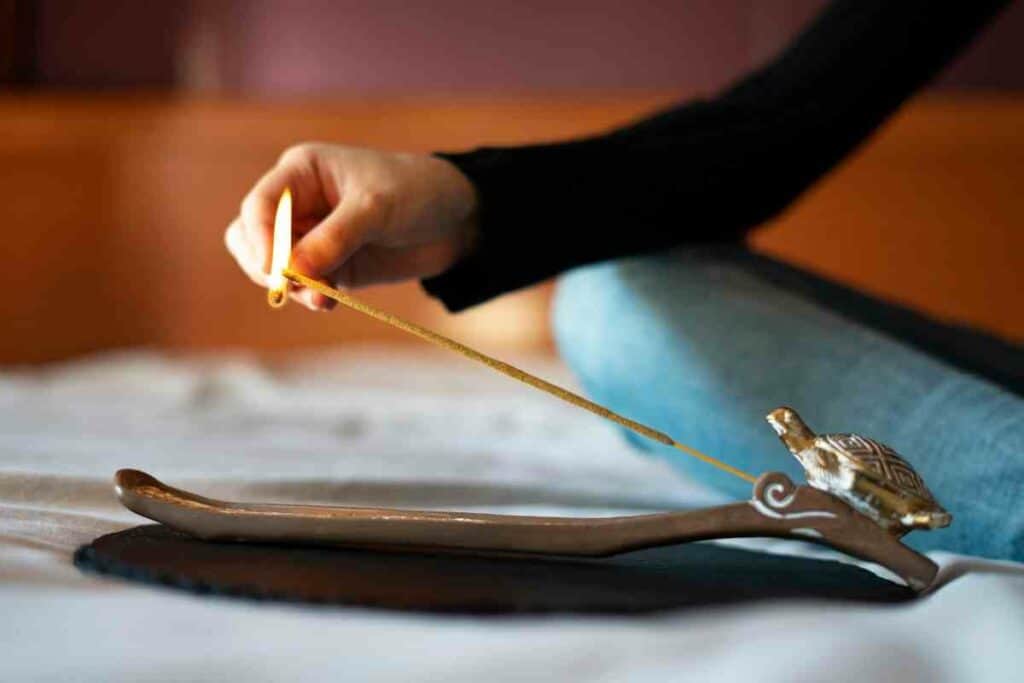
It’s at these shrines that Japanese people believe they can communicate with their dead loved ones by ringing a bell and offering incense.
There is actually an art to appreciating incense in Japan called Kodo, which means “the way of incense”.
Kodo – the way of incense
Kodo is the art of appreciating incense.
It is one of three such arts of refinement, the others being chado (tea) and kado (for flowers). Essentially, kodo is a ceremony celebrating incense.

It is believed that this art and appreciation first began with Samurai warriors who would use incense to purify their bodies and minds as they prepared for battle.
The practice was refined in the 16th century to be the kodo we know today.
What happens in kodo?
During kodo, a small plate (Gin-yo) is used to heat a fragrant wood fragment with burning charcoal from below.
From the outside, it looks like a small ceramic cup. The heat below the wood causes it to release fragrances and essential aromatic oils.
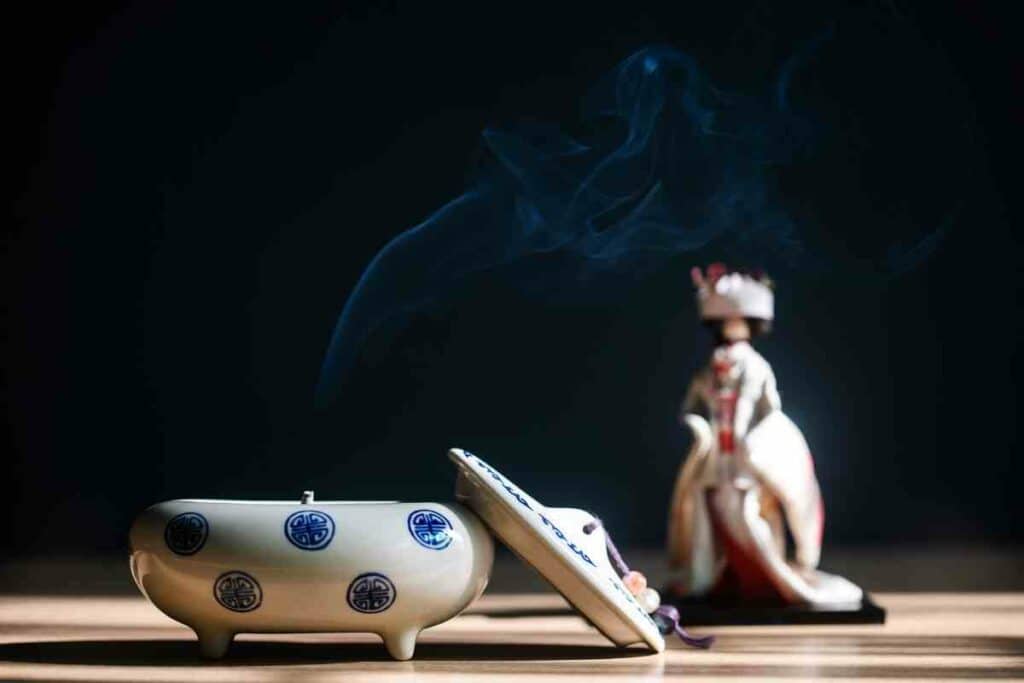
There is no smoke because the wood is only heated rather than burned.
There are different types of wood used. These include agarwood and sandalwood.
Other substances include:
- cinnamon bark
- clove
- lavender
- camomile
- safflower
- and ginger lily among others
Owing to the depletion of natural resources, it’s increasingly difficult to source raw materials like agarwood.
For Example – Sandalwood needs to have been growing for at least fifteen years before it can be used to make incense. This has caused prices to increase.
It is because of these high prices that kodo isn’t practiced as often as a tea ceremony or flower arranging.
Types of incense using agarwood
Depending on its origin, agarwood incense is categorized differently.
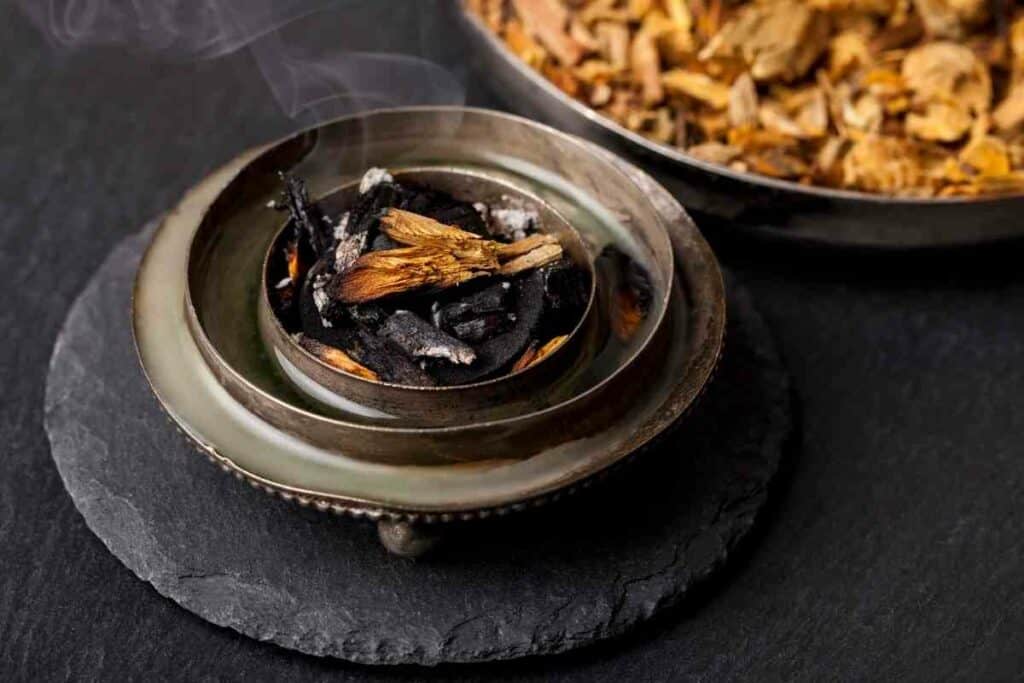
Here are the types you’ll find available:
- Kyara – This incense is the most valuable and expensive. It is made from Vietnamese agarwood and can often be worth more than gold, gram for gram. It produces a slightly bitter, spicy aroma.
- Manaka – This incense is made from Malaysian agarwood. It has a light, changeable fragrance.
- Rakoku – Rakoku has a deep and sharp fragrance. It is made from Thai agarwood.
- Sumotara – From Sumatra in Indonesia, the agarwood used to make Sumotara incense has a slightly sour but earthy scent.
- Manaban – Manaban incense is salty and strong, but the origin of the wood is unknown.
- Sasora – Sasora agarwood comes from India. It has a scent that disappears almost instantly and is to be enjoyed for that moment.
Utensils used for kodo
The tools used for kodo are many.
They’re called kodogu and you’ll see lots of different motifs and styles for different occasions.
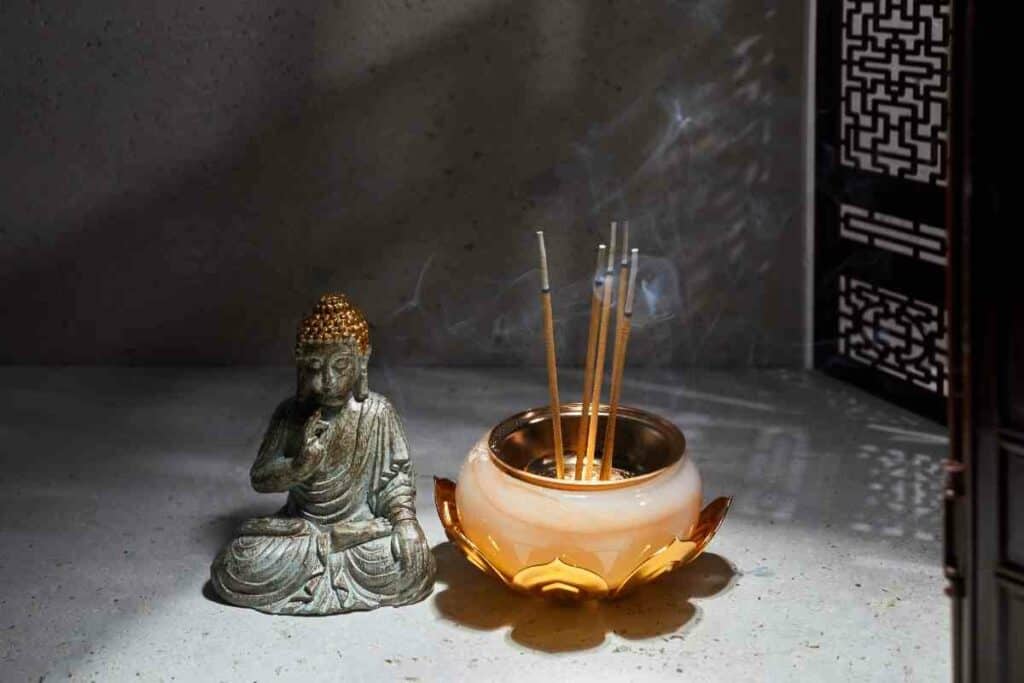
All of these tools are used extremely carefully and are cleaned properly before and after use.
They’re considered to be high art materials.
Some of the equipment included in kodogu are:
- A container with three tiers called a jukobako. This stores the incense, the new plates, and used plates
- A long tray called a nagabon
- A censer called koro
- Mica plates – gin-yo
- A small, wooden incense holder called a honkoban
- White ash
- A paper packet used for storing incense – shinoori
- A silver box for mica plates – ginyo-bako
- Charcoal or tadon
- A small vase to store the utensils called a koji-tate
- Metal tongs or tweezers ginyo-basami
- Ebony chopsticks to pick up the incense
- Metal chopsticks koji to move the charcoal around
- A small spatula to move the incense
- A tamper ha i-oshi
- A feather brush for cleaning ko-hane
Monko
Enjoying incense and all of its preparations is called monko.
This means “listening to incense”. The idea is that the aroma infuses into your soul and body. It’s not as simple as just smelling the incense.
In Monko: Participants will sit and smell the incense in turns as it’s passed around. They make observations about it and often play games to guess the material.
Other types of Japanese incense
It’s also possible to find other types of Japanese incense.

This includes:
- coiled
- granulated
- or balled incense
You can also find low smoke options and pure options:
- A coiled incense stick will last for a long time – as long as two hours – when it’s burning, owing to its shape.
- Granulated incense is sprinkled on top of hot charcoal and so will burn quite quickly.
- Balled incense, on the other hand, has been kneaded into its shape. It’s then heated with charcoal. You’re most likely to come across this in a Japanese tea ceremony.
Final thoughts
When people in the West often think of incense, they image a stick that you light and burn in an incense holder.
But Japanese incense is much more than that and burning it is an actual art that deserves lots of respect.
Also Helpful
- 12 Things Tourists Should NEVER Say in Japan
- Kissing Robot: Exploring the Popularity of the Chinese Kissing App
- Unlocking the Secret Dating Rituals Only Locals Know in Japan
- Samurai Armor: Ancient Protection for Japan’s Elite Warriors
- 10 Amazing Facts About Schools in Japan: Unique Traditions and Educational Practices
- Where can you see snow monkeys in Japan: Best locations and viewing tips









